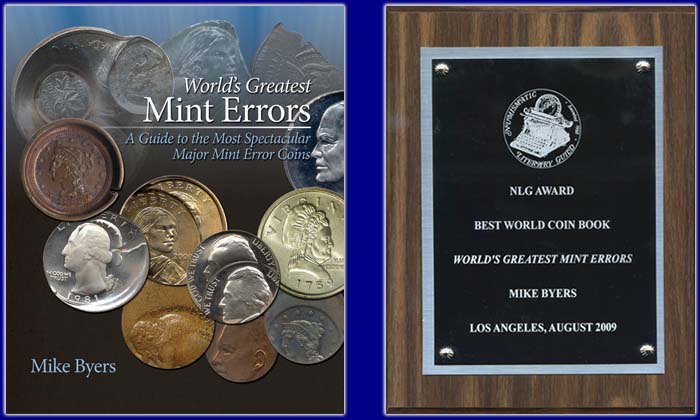1945 Lincoln Cent
On 3.61 Gram Planchet with a Composition of:
83% Copper, 12% Silver, and 5% Zinc
NGC MS 64 BN
Discovery Coin
UNIQUE
$15,000
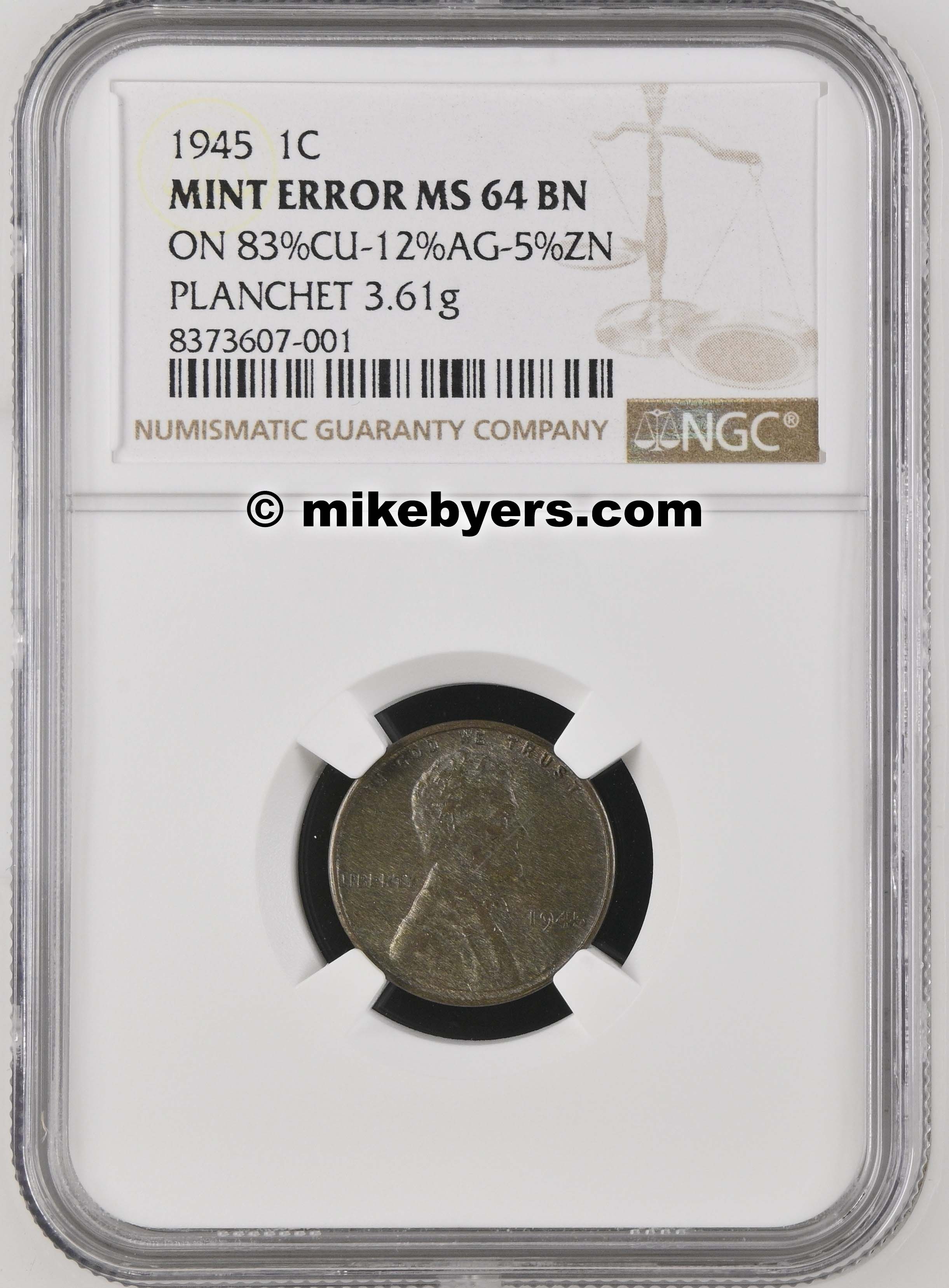
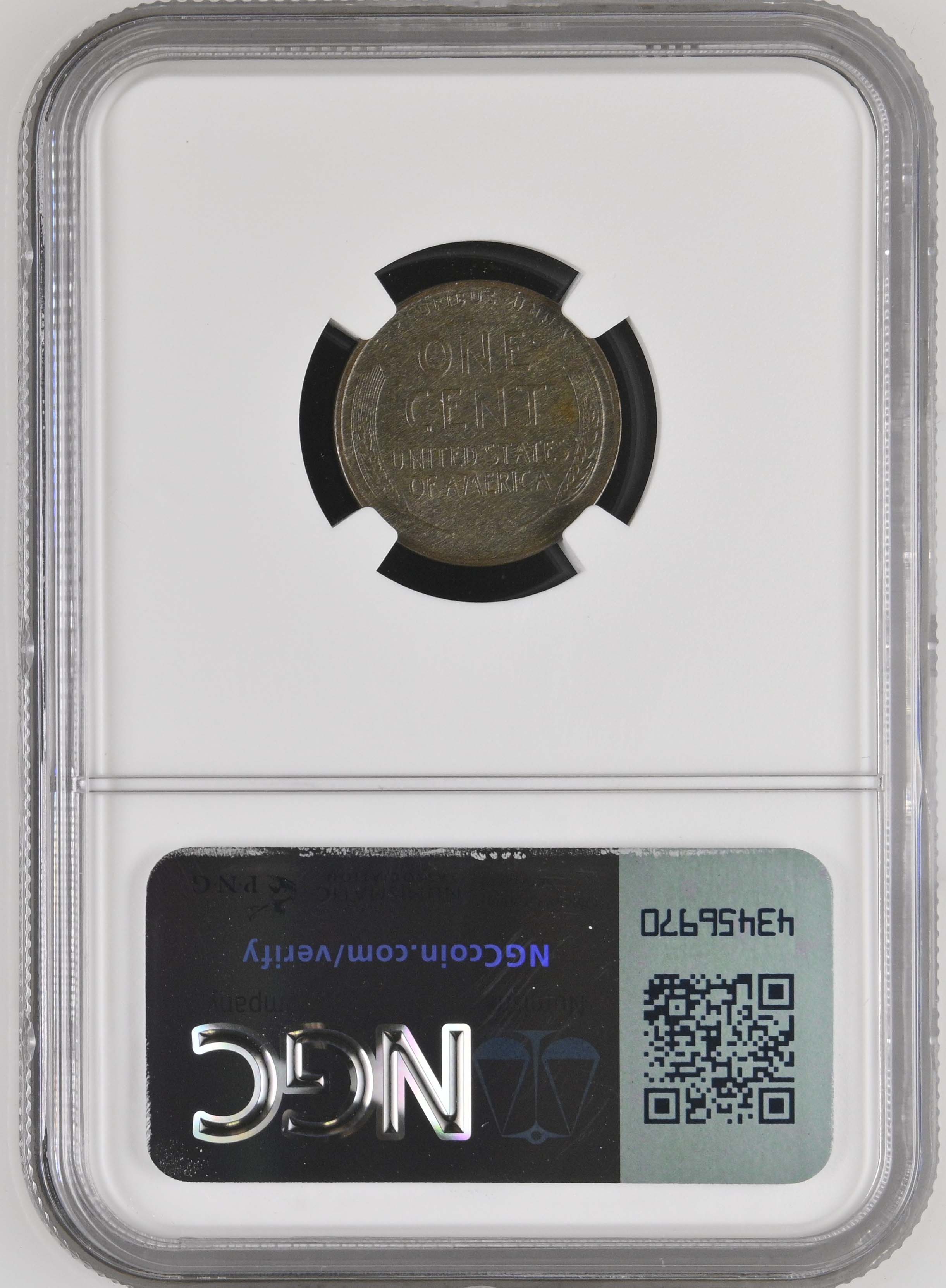
This is a fascinating new discovery. There are two possible explanations of how this 1945 Lincoln Cent Off-Metal occurred. It is either an experimental strike or test piece from the end of World War II, or it was struck on a planchet with War Nickel silver alloy, which is explained in detail in a letter by Roger Burdette. It is in gem mint state condition, as struck, and has a grey/silver appearance instead of the normal copper look of a 1945 Lincoln Cent.
The Mint Error News website has a 69 page report of coins struck by the U.S. Mint for foreign countries. It is the most comprehensive report available anywhere. This 1945 Lincoln Cent Off-Metal does not match any known planchet composition for U.S. or foreign coins.
Roger Burdette, author of United States Pattern and Experimental Pieces of WW-II, researched this just discovered mint error. Based on his research, a very likely scenario of how this mint error occurred is that War Nickel silver alloy was accidentally mixed the normal copper alloy resulting in a planchet weighing 3.61 grams and a composition of 83% copper, 12% silver, and 5% zinc. This is in comparison to a regular 1945 Lincoln Cent with a weight of 3.11 grams and a composition of 95% copper and 5% tin or zinc.
Here is a letter with his analysis:
| February 11, 2025 Mike, The coin photos arrived OK. A standard 1945 cent has a calculated density of 8.8685 g/cm3. Your 1945 cent has a calculated density of 9.0521 g/cm3, which is about 0.1836 greater than normal due to the silver content. Nominal weight of a 1945 cent is 3.11035 grams (48 grains +/- 2 grains). The slab weight of your coin is 3.61 grams, which is about 0.5 gram greater than normal. Considered together, and assuming minimal deviation from expected values, your coin should weigh 3.6814 grams or about 0.0741 grams (1.144 grains) heavier than reported on the slab. This discrepancy is within the legal tolerance; or might be due to measurement error in weight, or rounding error in XRF measurement, or poor XRF technique. None of these explain the silver content. From knowing that both normal alloy cents and wartime alloy nickels were in production at the Philadelphia Mint in 1945, an initial speculation might be cross contamination with the 56% copper, 35% silver component of five-cent coin alloy. (Copper and silver were prepared and mixed separately from the 9% manganese.) To see if this is a plausible conjecture we have to examine Philadelphia Mint melting operations in 1944-1945 - the only years that both shell case brass, pure copper, and five-cent wartime alloy were in simultaneous use. Normal operation for 1944 cents (and 1945). To return one-cent coins to the pre 1943 alloy and quell complaints about zinc coated steel cents, the War Production Board encouraged use of expended 50cal shell cases for cent coinage. By November 1943 a suitable compromise had been agreed to. The Mint did not have suitable ventilation and annealing equipment to melt brass shell casings. Contractors melted 70% Cu, 30% Zn shell cases into brass bars. The brass was supposed to be assayed to ensure compliance with the contract. However, Dir. Ross' memo to Shanahan, Superintendent of the San Francisco Mint states: While the specifications in the bid invitations provide for assay certifications it is not contemplated that the shell ingots will be kept segregated by melts as is done with silver. It is expected by all concerned that the shell-ingot melts will run sufficiently uniform in composition to satisfactorily permit their use without consideration of the probable small variations, particularly since the 5 to 1 ratio of added virgin copper will materially diffuse the shell-ingot variations. In other words, it is anticipated that the indicated procedure will produce coin practically within the limits of the legal composition. Normal cent coinage alloy was made by combining one (1) bar of shell case brass and five (5) times the brass' weight with pure copper. (A proportion of 5 Cu: 1 Brass.) This produced a normal 95% Cu, 5% Zn alloy. A trace of tin was added co comply with the coinage law. |
Here is a comparison between a
regular 1945 Lincoln Cent (left) and
this just discovered mint error (right)
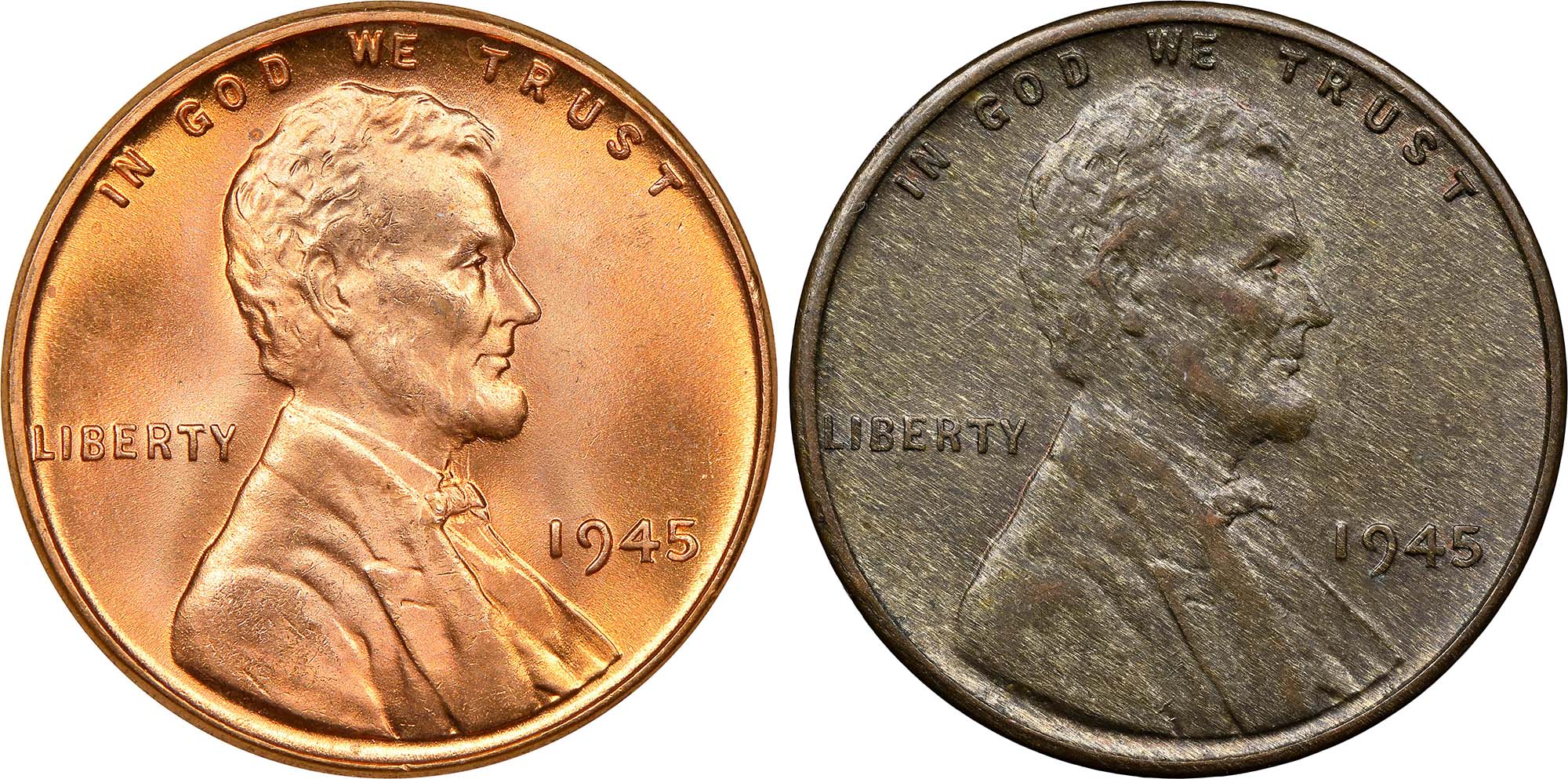
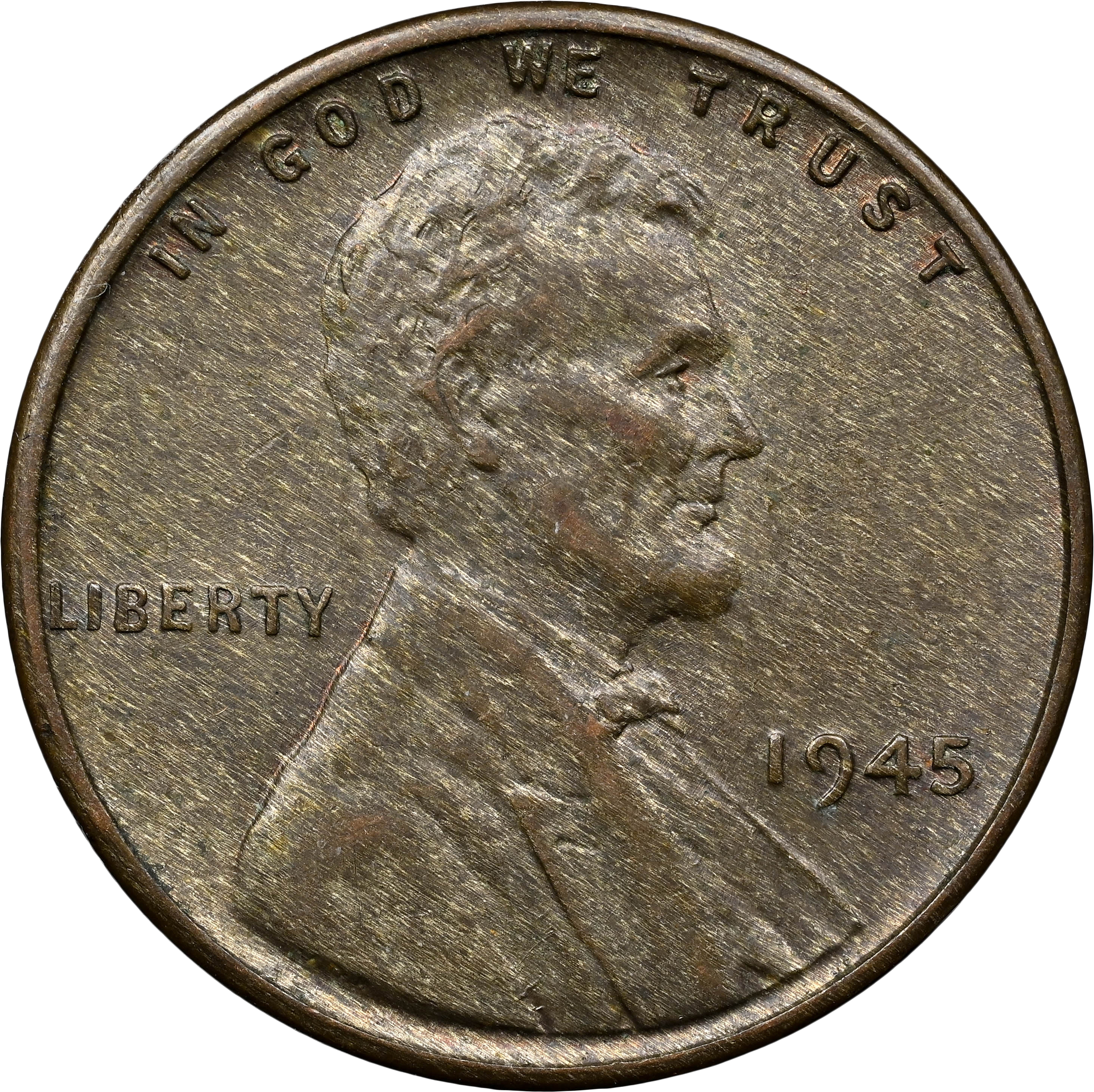
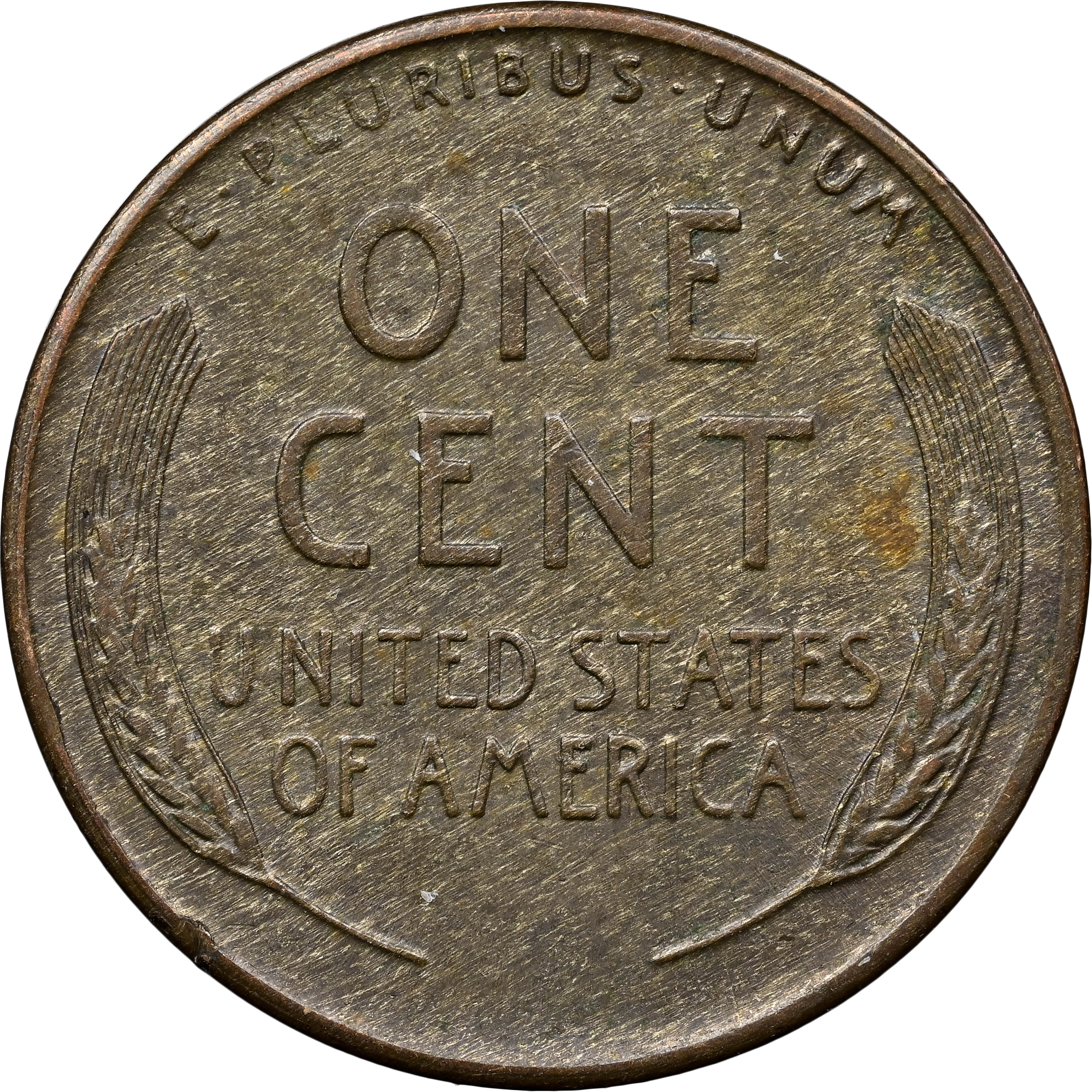

The Mint Error News website has a 69 page report of coins struck by the U.S. Mint for foreign countries. It is the most comprehensive report available anywhere.

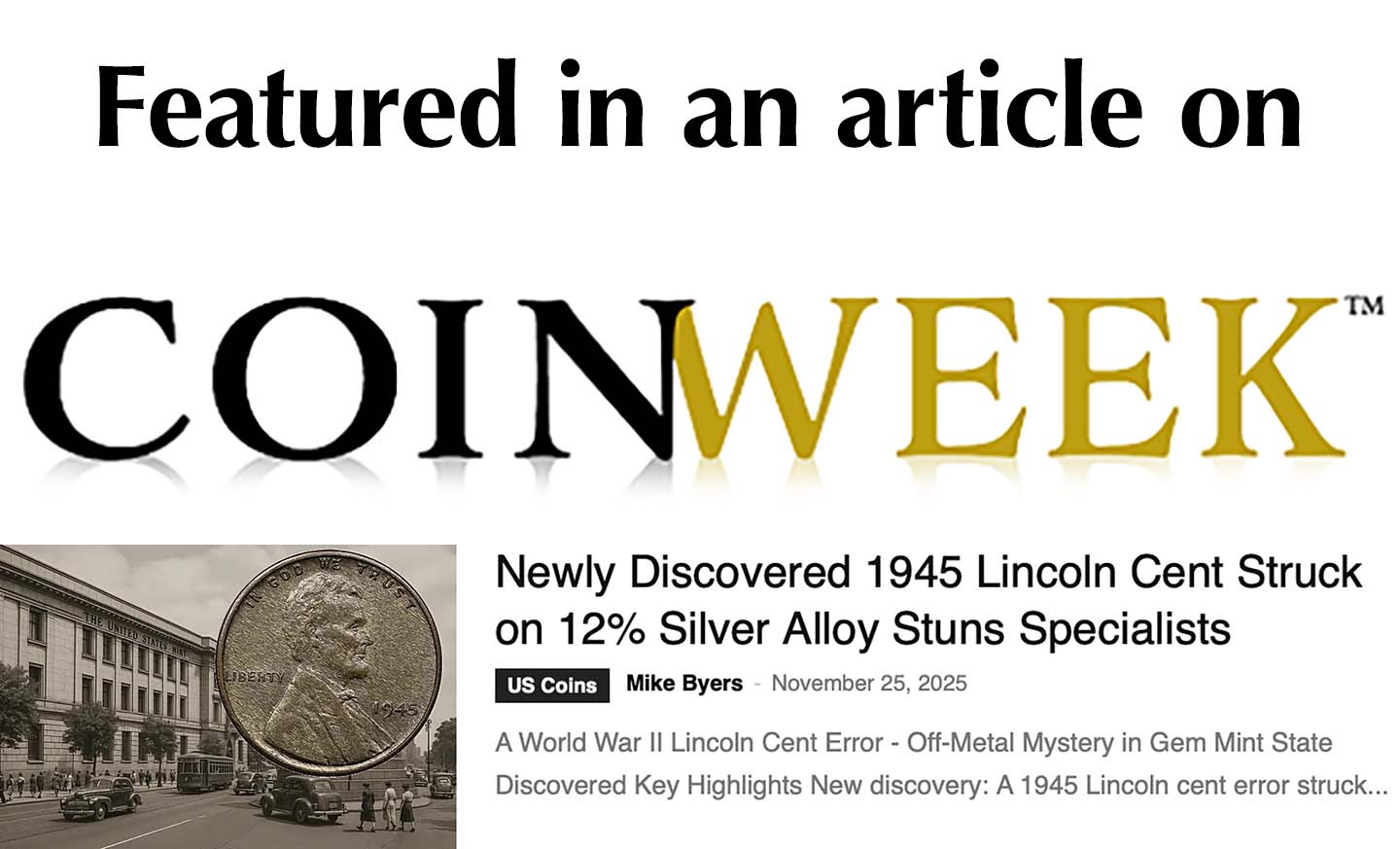
Off-Metal Errors are featured in my NLG Award winning book,
World's Greatest Mint Errors.
